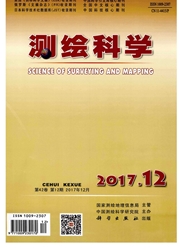

 中文摘要:
中文摘要:
WRF模式对包含西太平洋、东印度洋和中国大陆的大区域气候模拟能力的提高对东亚夏季风气候的预测非常重要。本文的研究目的是找出合理的物理方案组合来模拟中国大陆、东印度洋和西太平洋这一特大区域的降水和温度。通过模拟2008年夏季气候并与观测进行对比分析,主要比较了Mellor–Yamada–Janjic(MYJ)和Yonsei University(YSU)边界层方案、WSM3和WSM5微物理过程方案、Betts–Miller–Janjic(BMJ)和Tiedtke积云参数化方案对这一区域的气候模拟结果。研究表明:各种物理方案的组合对于温度空间分布的模拟与观测类似;边界层方案的选择对降水影响较大,MYJ方案比YSU方案对降水的模拟效果要好;积云方案Tiedtke对雨带分布,特别是赤道辐合带(ITCZ)降水模拟更加合理。
 英文摘要:
英文摘要:
Enhancing the ability of the WRF model in simulating a large area covering the West Pacific Ocean, mainland China, and the East Indian Ocean is very important to improve prediction of the East Asian monsoon climate. The objective of this study is to identify a reasonable configuration of physical parameterization schemes to simulate the precipitation and temperature in this large area. The Mellor-Yamada-Janjic (MYJ) and Yonsei University (YSU) PBL schemes, the WSM3 and WSM5 microphysics schemes, and the Betts-Miller-Janjic (BMJ) and Tiedtke cumulus schemes are compared through simulation of the regional climate of summer 2008. All cases exhibit a similar spatial distribution of temperature as observed, and the spatial correlation coefficients are all higher than 0.95. The cases combining MY J, WSM3/WSM5, and BMJ have the smallest biases of temperature. The choice of PBL scheme has a significant effect on precipitation in such a large area. The cases with MYJ reproduce a better distribution of rain belts, while YSU strongly overestimates the precipitation intensity. The precipitation simulated using WSM3 is similar to that using WSM5. The BMJ cumulus scheme combined with the MYJ PBL scheme has a smaller bias of precipitation. However, the Tiedtke scheme reproduces the precipitation pattern better, especially over the ITCZ.
 同期刊论文项目
同期刊论文项目
 同项目期刊论文
同项目期刊论文
 期刊信息
期刊信息
